A lab power supply or a bench power supply is a power supply that can be used to set the desired value of DC voltage and current. Or in simple words, you can set any voltage and current value from the range that the lab power supply supports. In this article, we will only talk about laboratory DC power supplies.
Types of laboratory power supplies
There are two types of power supplies: linear and switching (switch-mode). White is linear, black is switching.
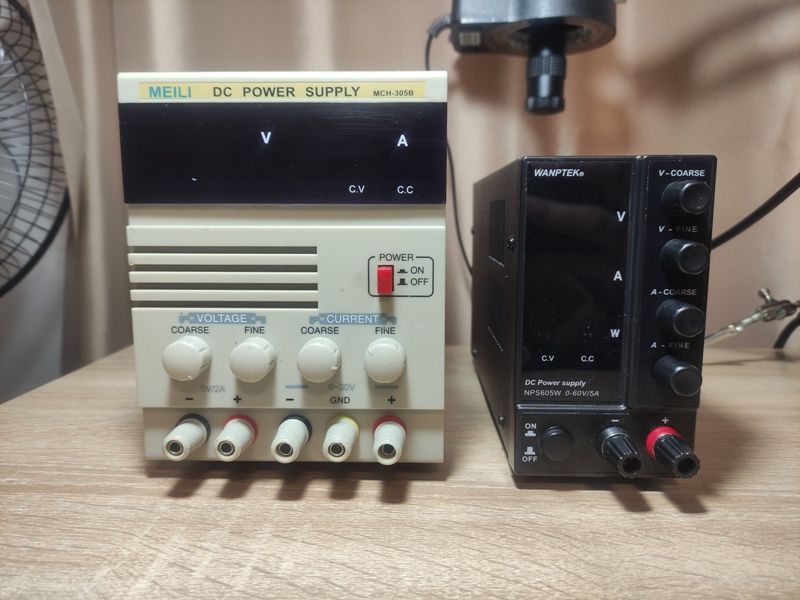
As you can see they differ in dimensions. A linear power supply of equal power will always be larger in size than a switching power supply. In my case, the switching power supply can deliver up to 300 watts to the load, but the linear power supply can only deliver 150 watts. Now compare their sizes. The switched-mode power supply is half the size and twice as powerful.
Linear lab power supply
Let’s take a look inside the linear power supply unit. The linear power supply contains a low-frequency power transformer and a voltage regulator board.
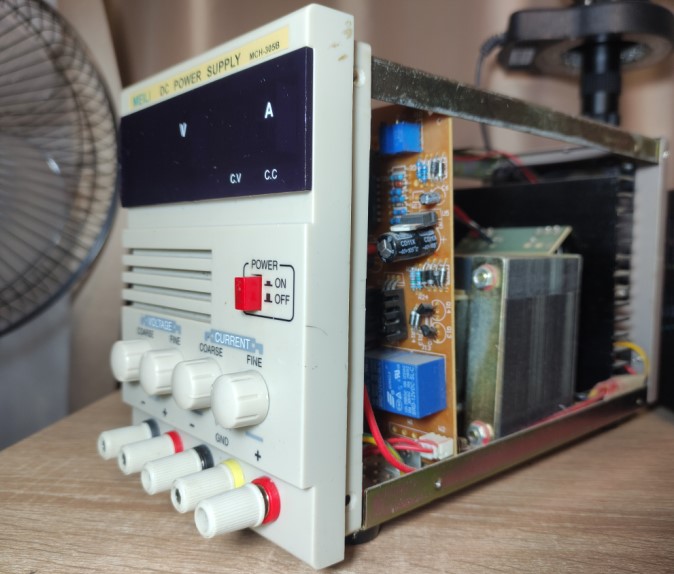
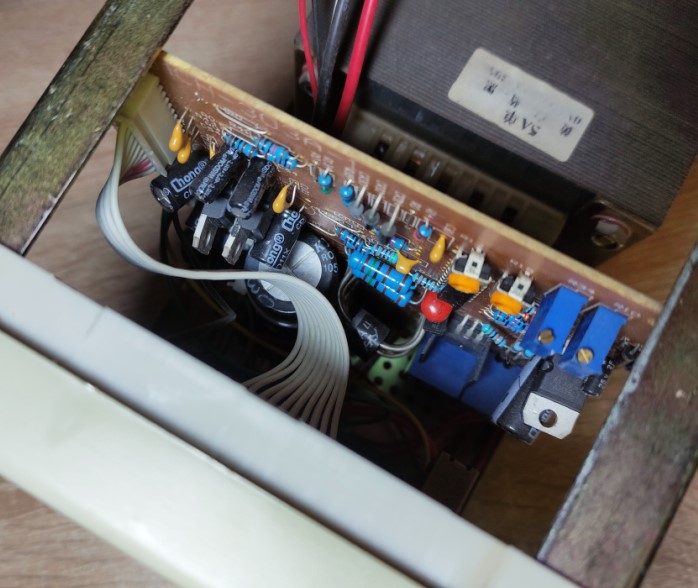
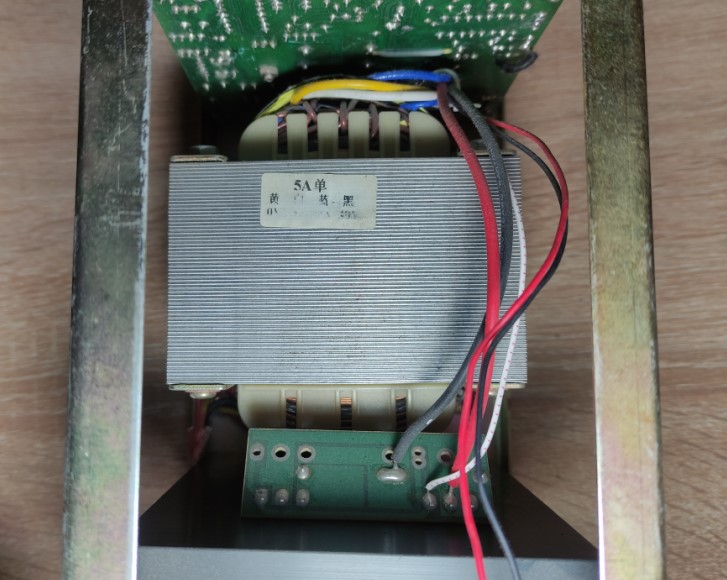
Typical block diagram linear power supply:

Switching lab power supply
Let’s take a look inside the switching power supply. As you can see, there isn’t some big low-frequency transformer here. Here we see only yellow high-frequency small-size transformers.
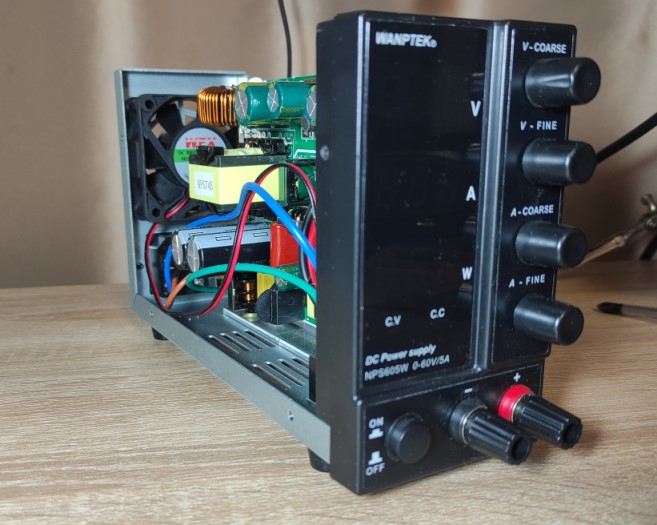
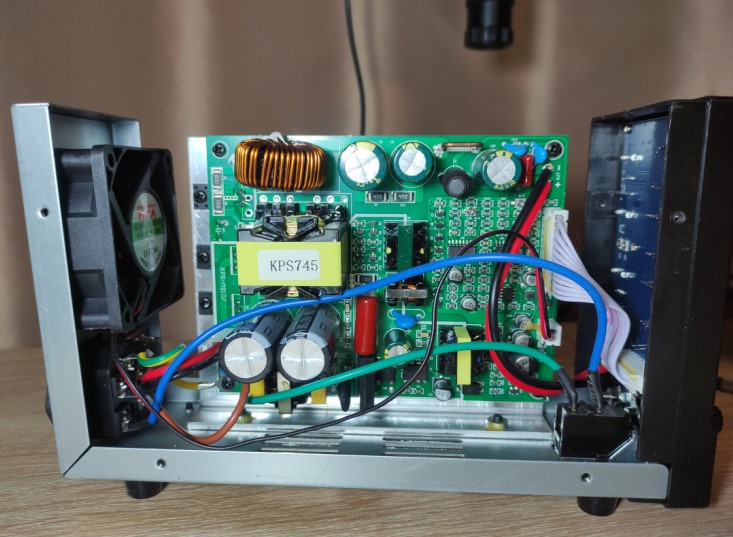
Typical block diagram switcher power supply:
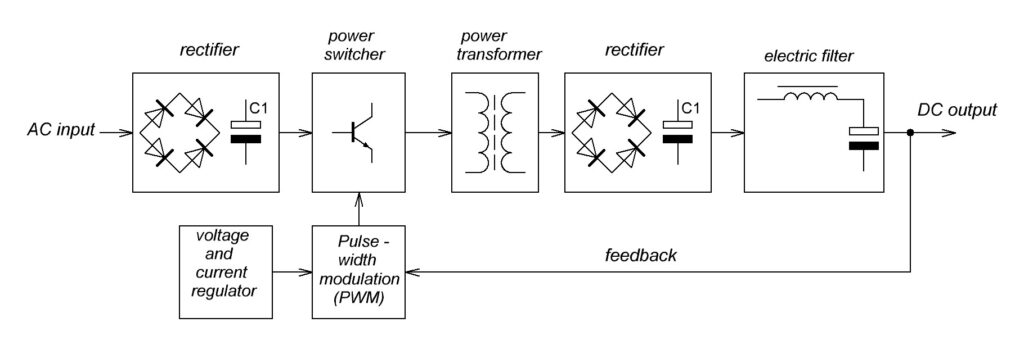
As you can see from the block diagrams, a linear power supply is easier to assemble than a switching power supply. But a linear power supply of the same electric power costs more than a switching power supply. Why is that? The reason is that a linear power supply has a large, massive low-frequency transformer that costs half the price of the entire power supply.
How to use a laboratory power supply
All laboratory power supplies have a power switch button, current display, voltage display, sometimes watt display, current adjustment, voltage adjustment, indicator “Constant Current (CC)”, indicator Constant Voltage (CV)”, output terminals.
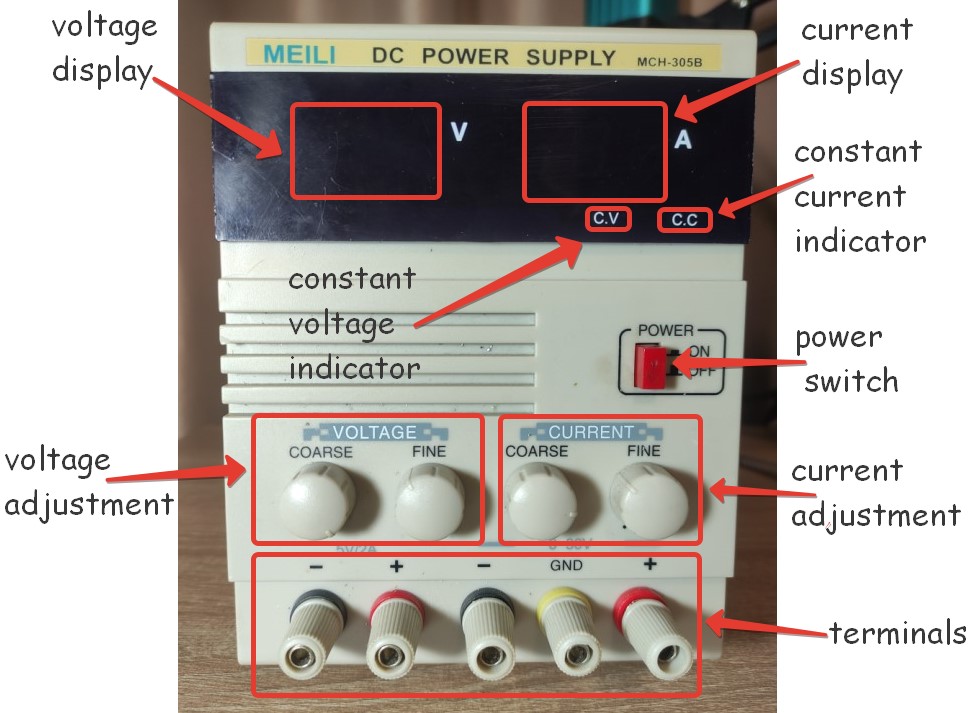
The first step is to turn on the laboratory power supply by pressing the power switch button.
So, there are two modes of operation for the lab power supply: constant current and constant voltage (CC and CV).
Constant voltage mode
In this mode, the power supply provides a constant voltage to the load, even if the load resistance varies slightly to one side or the other. My power supply can provide no more than 30 Volts and 5 Amps to the load. Let’s see it in practice. I have two different loads: an incandescent light bulb and a PC fan. Their supply voltage is 12 volts.
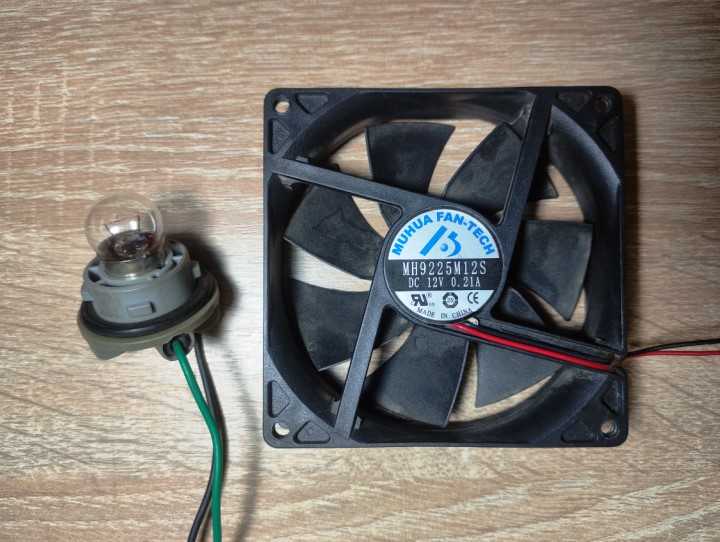
In order to set the CV mode, we must fully unscrew the current knobs.

Press the power button and then set the required voltage
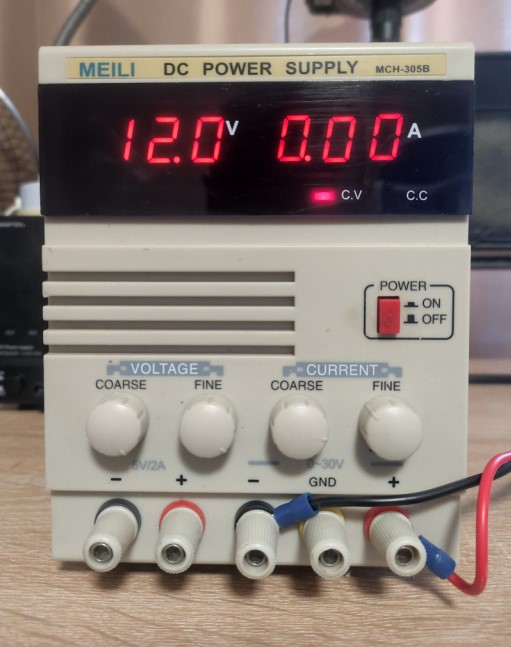
Let’s connect the light bulb to the bench power supply. Lamp power consumption 0.69 Amps.
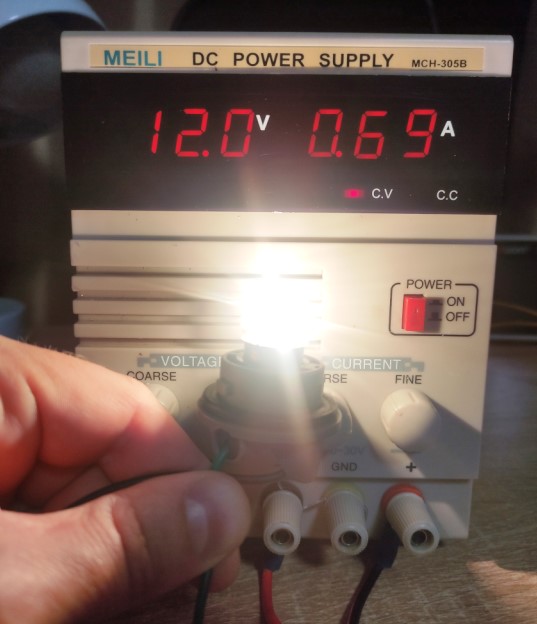
Let’s see how much current our fan consume.
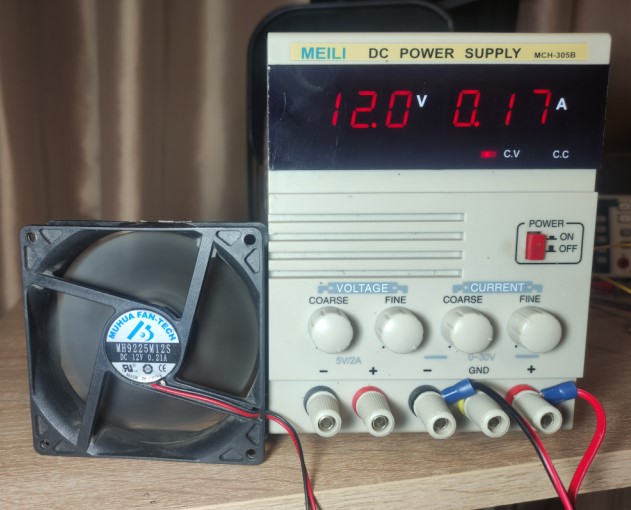
In this mode, the voltage does not change. This power supply can deliver up to 5 amps of current to the load, but the voltage is still 12 volts.
Constant current mode
In this mode, the power supply provides a constant current to the load, even if the load resistance varies slightly to one side or the other.
How to set this mode?
The first thing we have to do is turn the voltage and current knobs fully counterclockwise so that the power supply display shows zeros or close to zero.
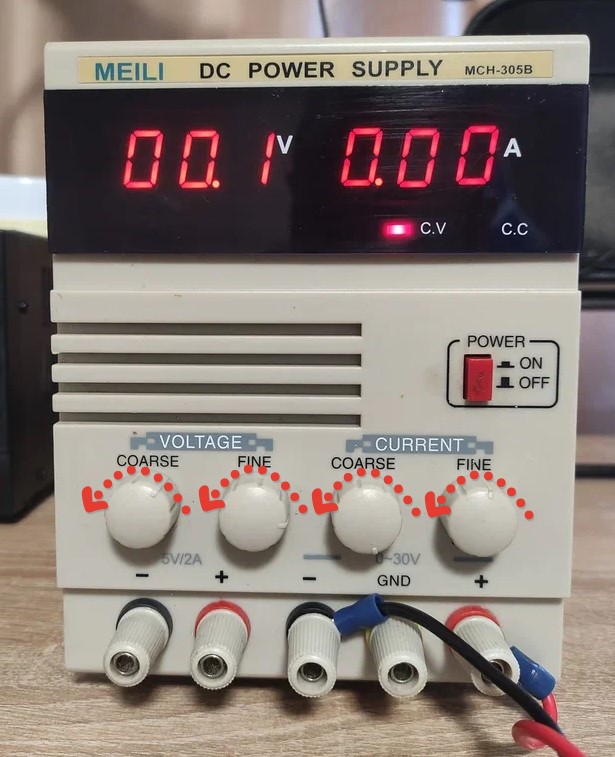
The next step is short-circuit the power supply terminals (plus and minus). LED CC (constant current) lights up.
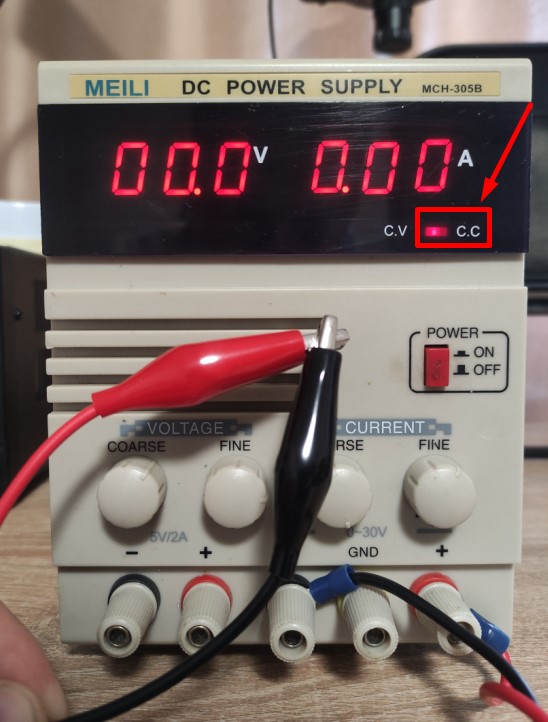
Then set the required current, which will not reach more than this value. For example, I set the value to 0.3 Amp.
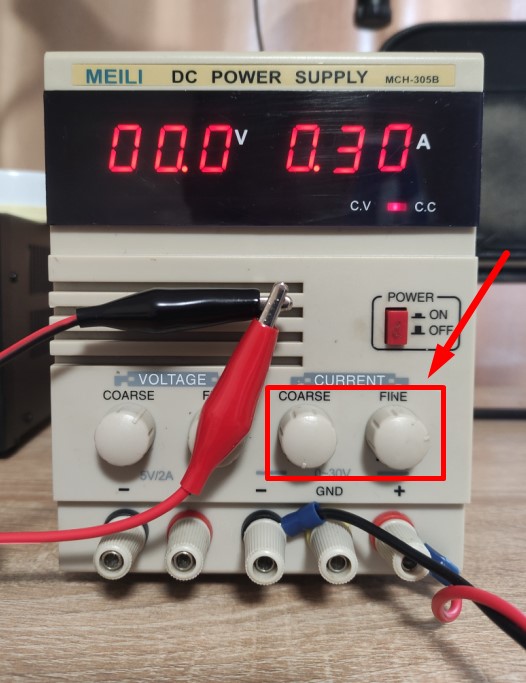
Eliminating the short circuit between plus and minus. The power supply enters CV mode. It’s ok. Now any load in this mode will consume no more than 0.3 Amps.
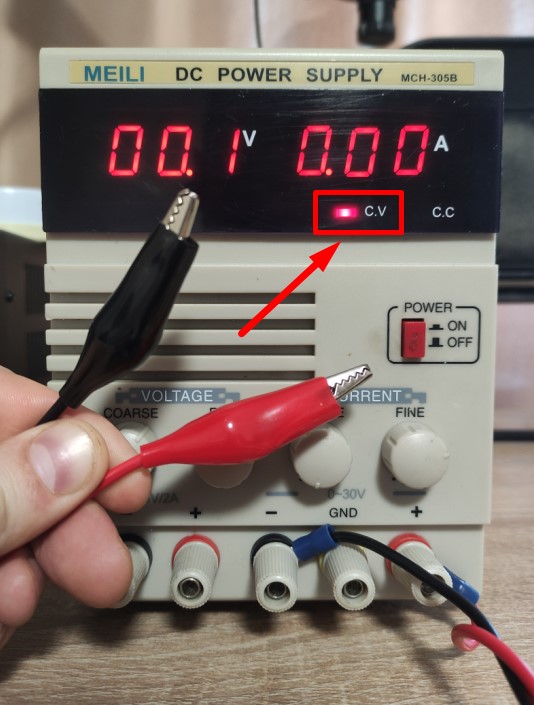
Let’s check. Let’s connect our light bulb. Set 12 volts and hook up a light bulb.
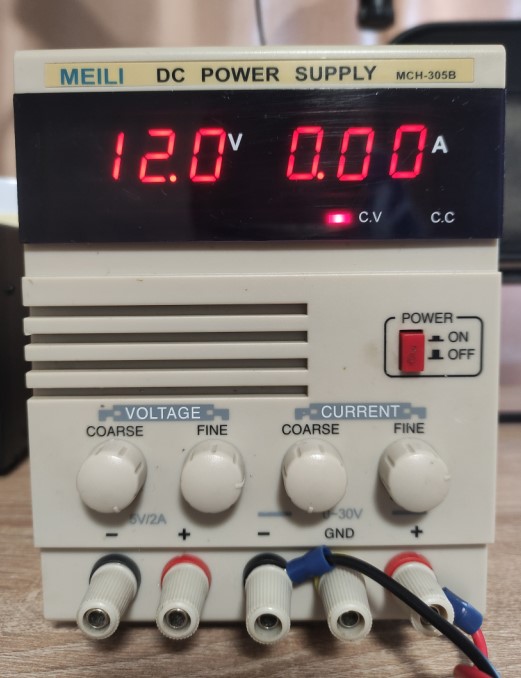
Wow! Voltage drop to 1.9 volts! Look at the current. 0.3 Amps. In this mode we limited the current to 0.3 Amps.
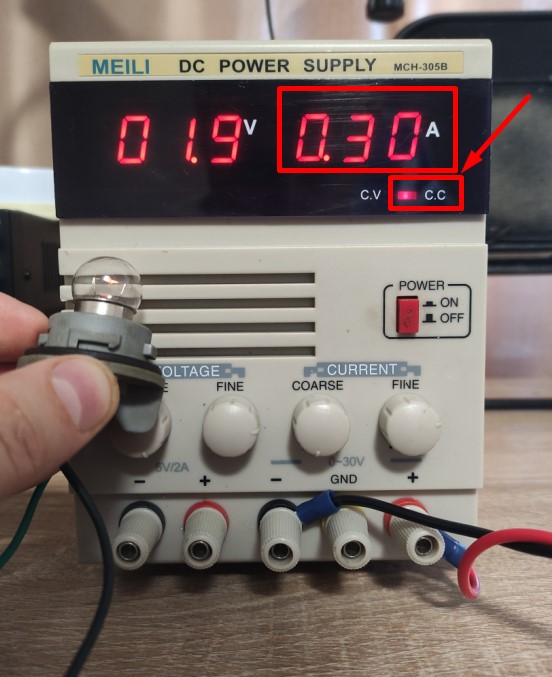
But why the drop in voltage? It’s Ohm’s law. I=U/R. We set the current manually, and the resistance of the lamp filament remained almost the same, then the power supply reduced the voltage.
If we didn’t limit the current, the bulb would glow as it should.

Which lab power supply is best
Let’s compare these two types of power supplies and look at their pros and cons.
Size
For equal power, a linear power supply will always be larger and heavier than a switching power supply. In my case, the switching power supply is smaller in size but even twice as powerful as the linear power supply. So the obvious pros of a switching power supply are compact size and high efficiency.

Noise
So we have a linear power supply with 1 volt set.
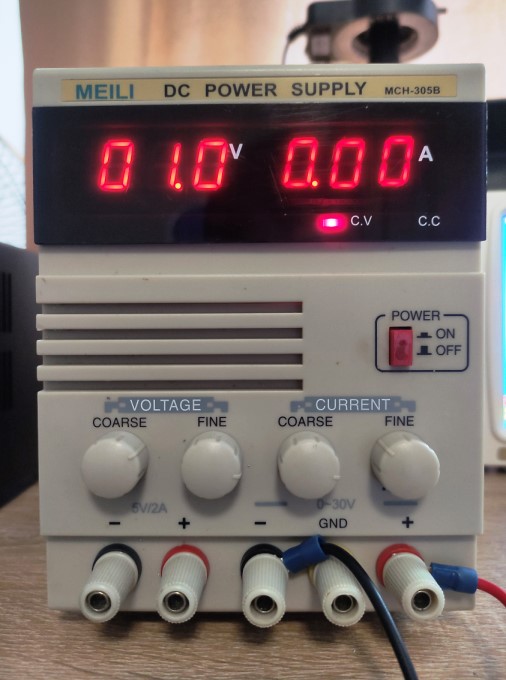
Let’s see the oscillogram from its terminals.
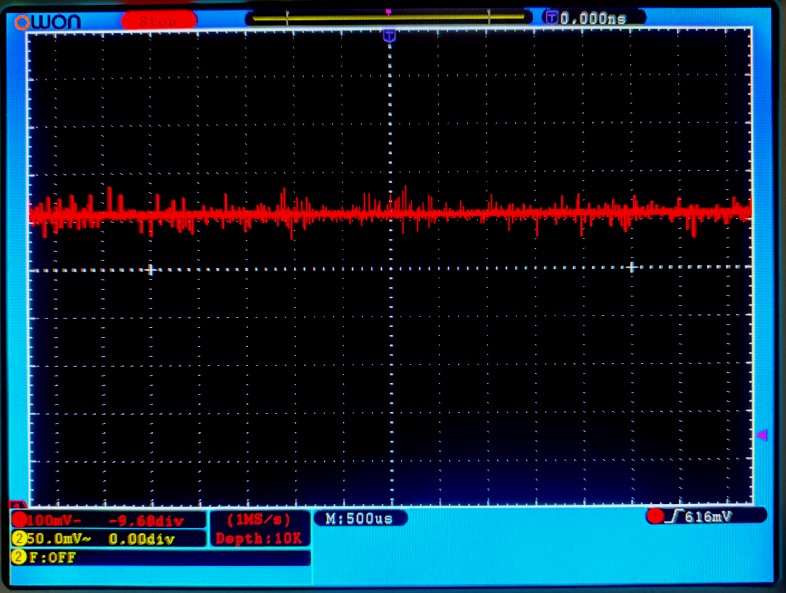
Let’s add a load to the power supply. The lamp will not glow as its supply voltage is 12 volts, but as an additional load it is fine.
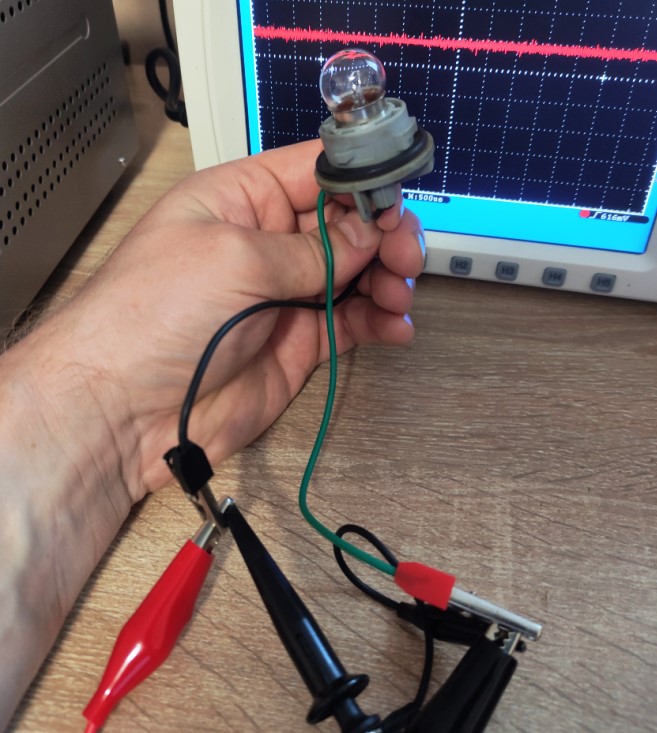
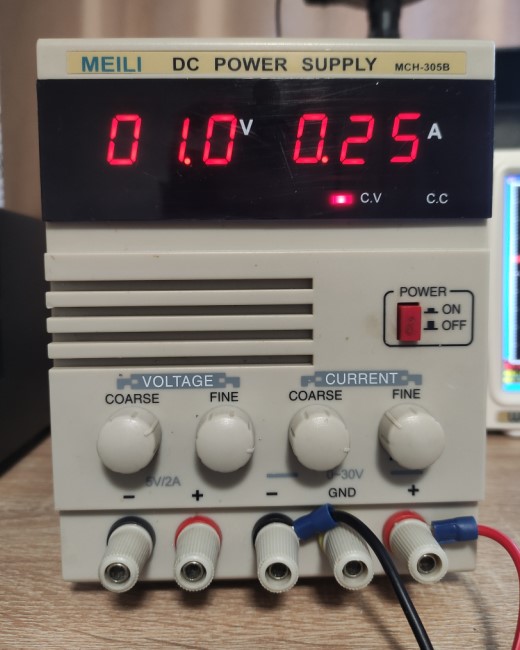
Look at the oscillogram
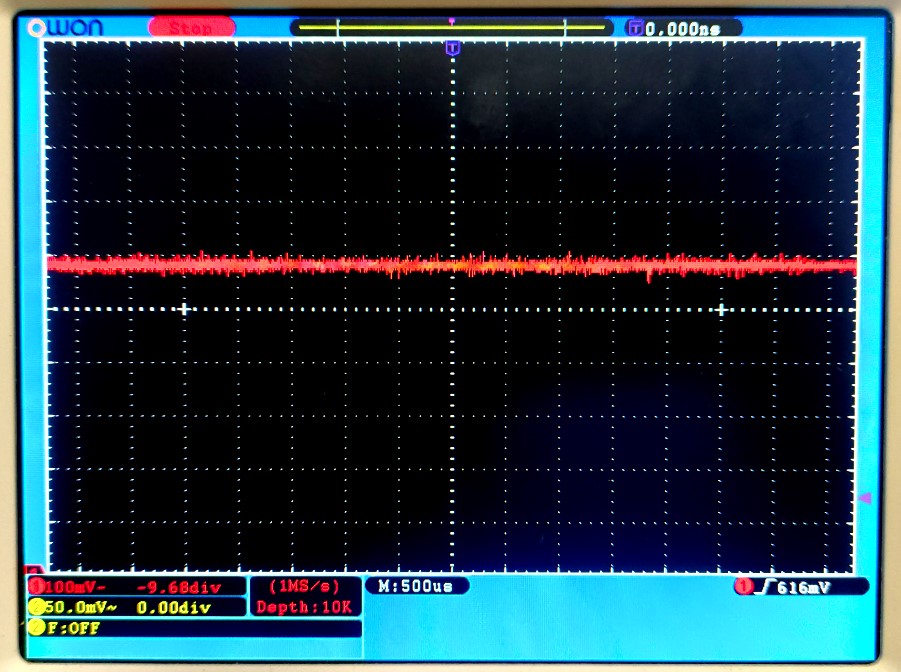
As you can see, under load and no load, the voltage from the power supply has a little bit of noise. It’s normal.
Let’s take a look at the switching power supply.
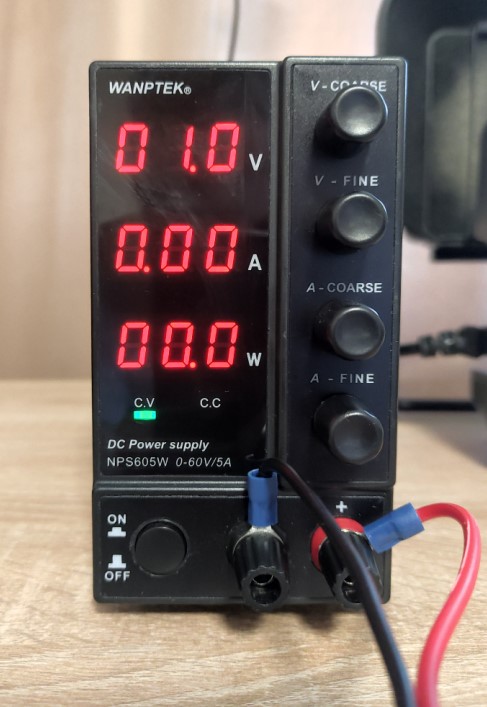
Let’s see the oscillogram from its terminals without the load.
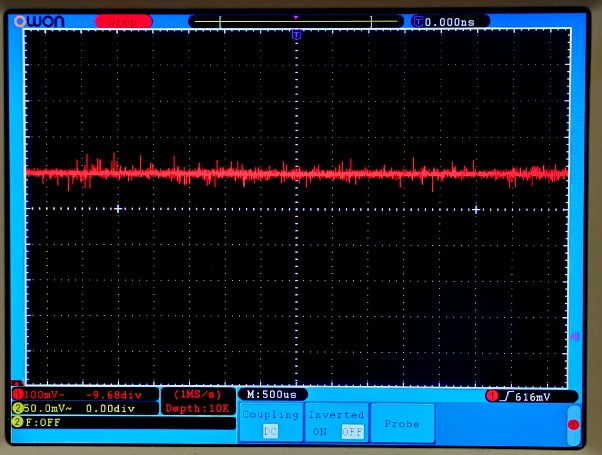
Connect the lightbulb to the terminals.
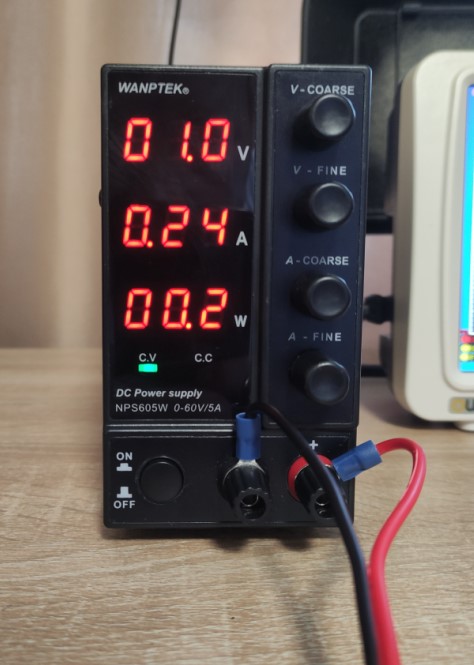
Look at the oscillogram. What the… ?
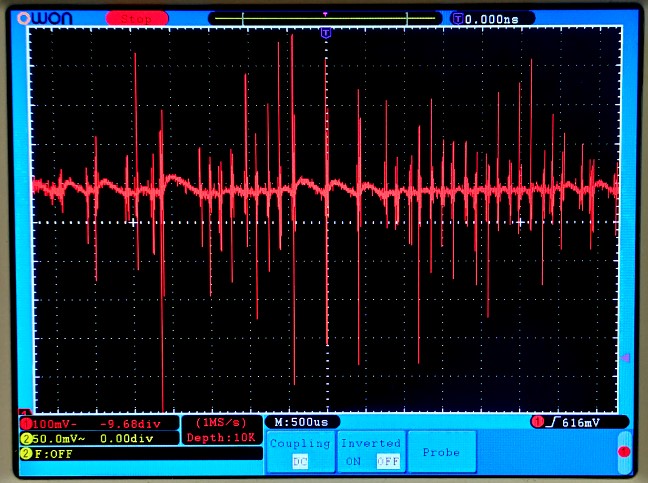
As you can see, switching power supplies have a lot of noise, unlike linear power supplies.
Energy efficiency
In no-load mode, the linear power supply already consumes 20 watts
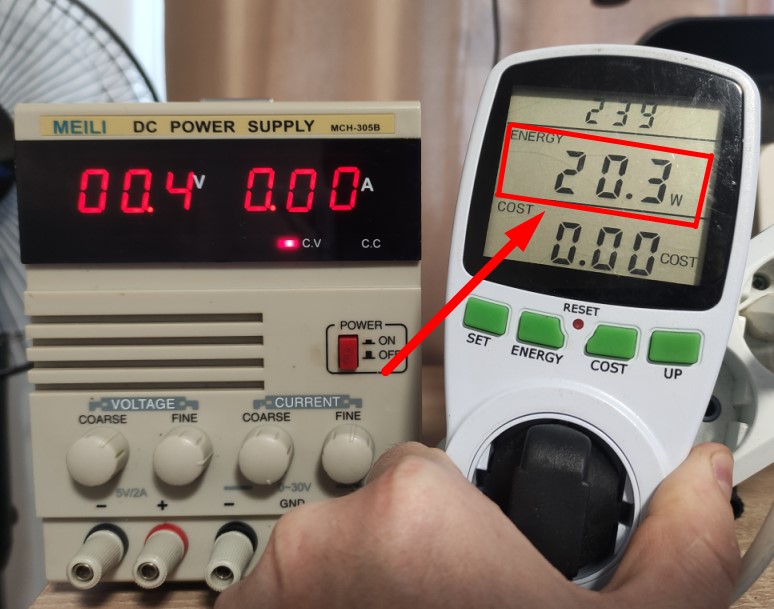
Let’s add a load and connect our light bulb.
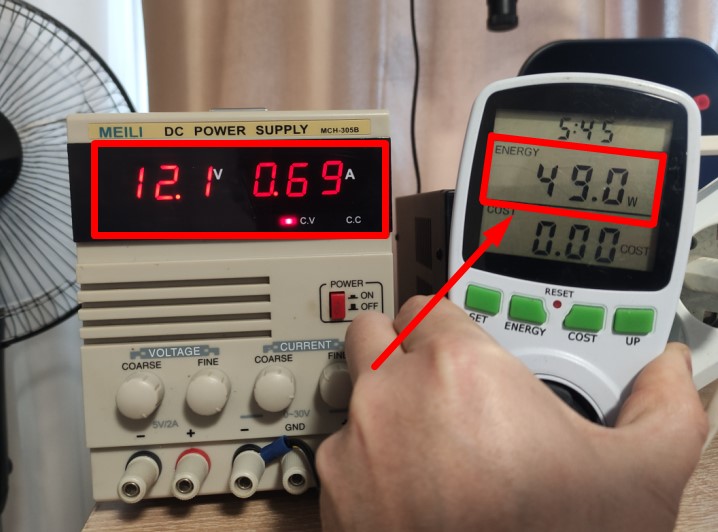
Our lamp consumes P=IU=0.69 x 12.1=8.35 Watts. 20.3 (without load) + 8.35 = 28.65. But total energy consumption 49 Watts. Where are the other watts?
Ok. Switch-mode power supply. No-load mode.
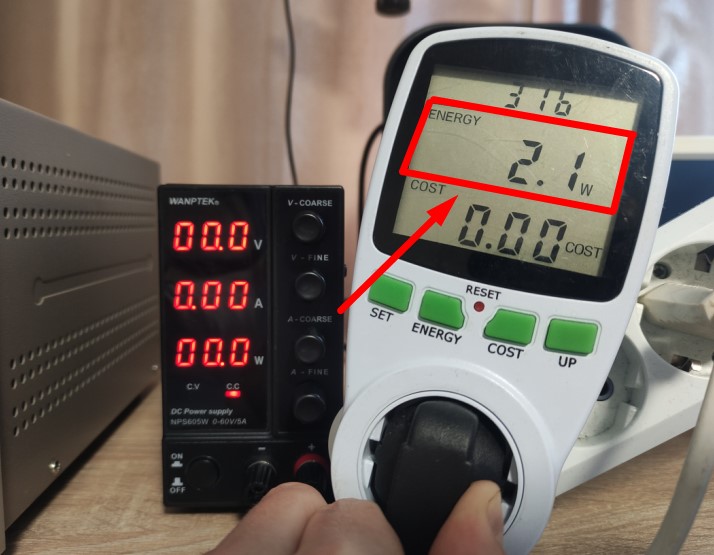
Let’s connect the bulb.
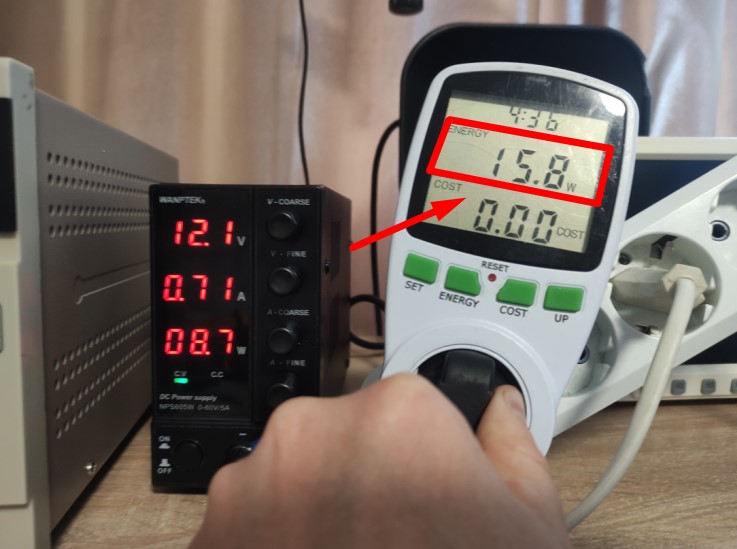
15.8 watts or 49 watts for power the lightbulb? Which is better?
Conclusion
Linear laboratory power supply:
large and heavy, has a large transformer, generate low noise and ripples at outputs, operate with lower power, voltage and current in comparison with switching power supplies; more expensive than switching lab power supply equal power. Linear power supplies are used in HI-FI audio system, communication, medical devices and laboratories where clean voltage with minimum noise is required.
Switching lab power supply:
compact and light, energy efficiency, operate within broad power, current and voltage; generate high noise and ripples, cheaper than linear lab power supply. Switch-mode power supply are used in manufacturing, aviation, PC, automotive and etc.
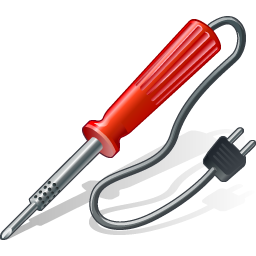



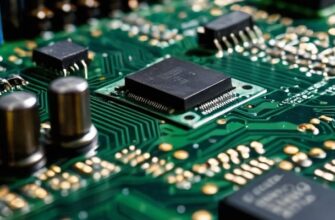
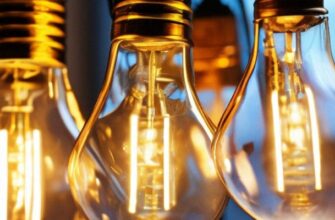



Nice job!